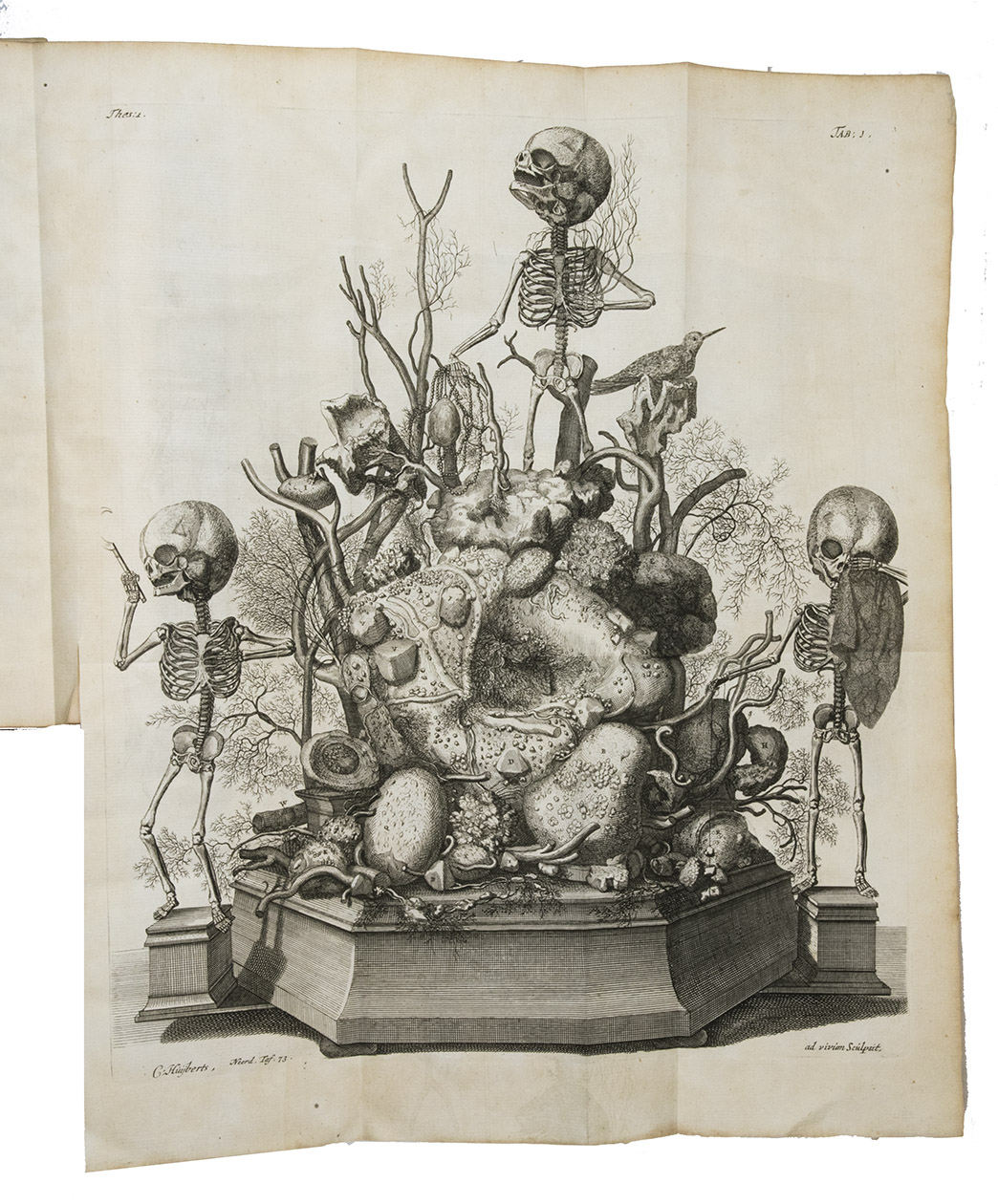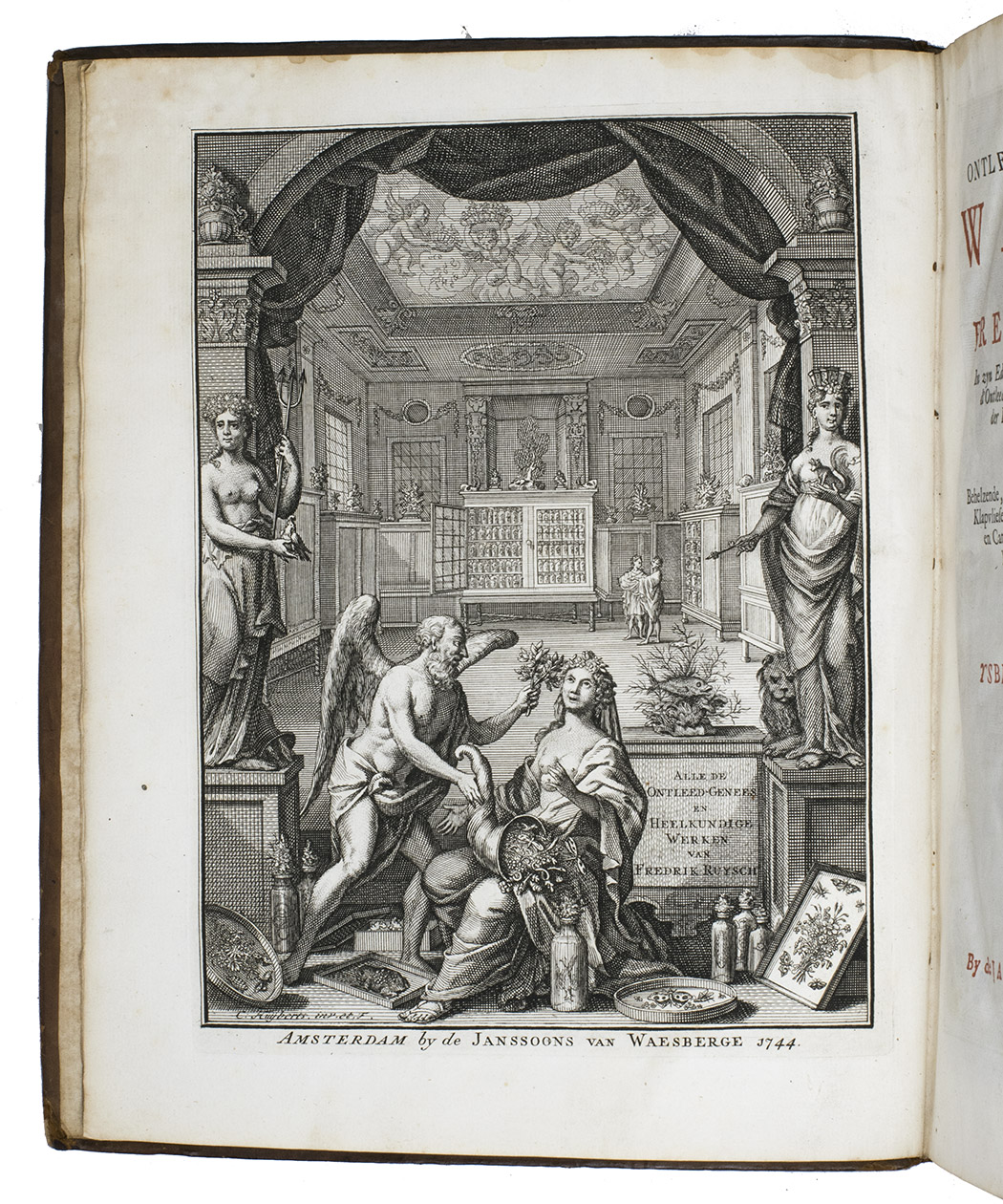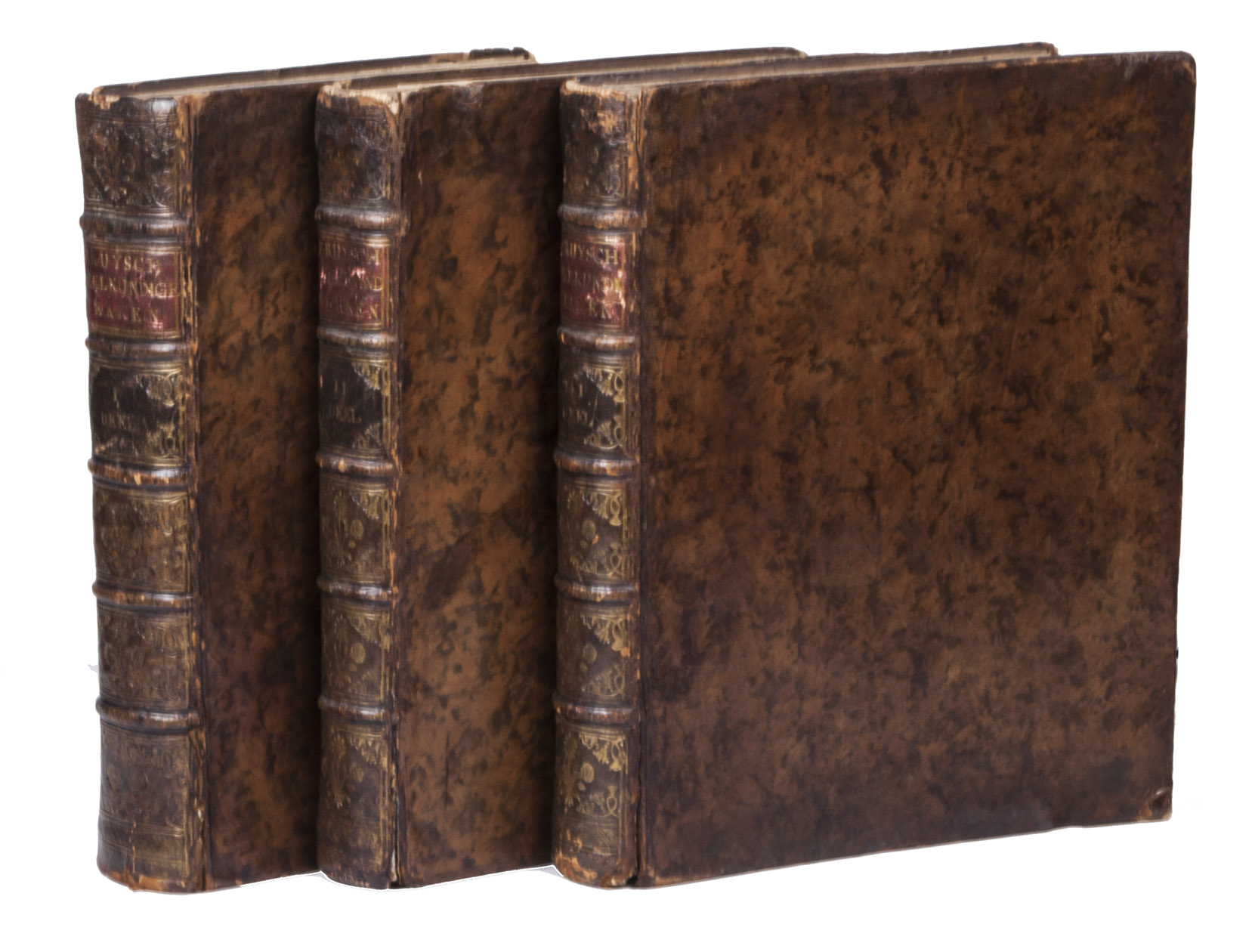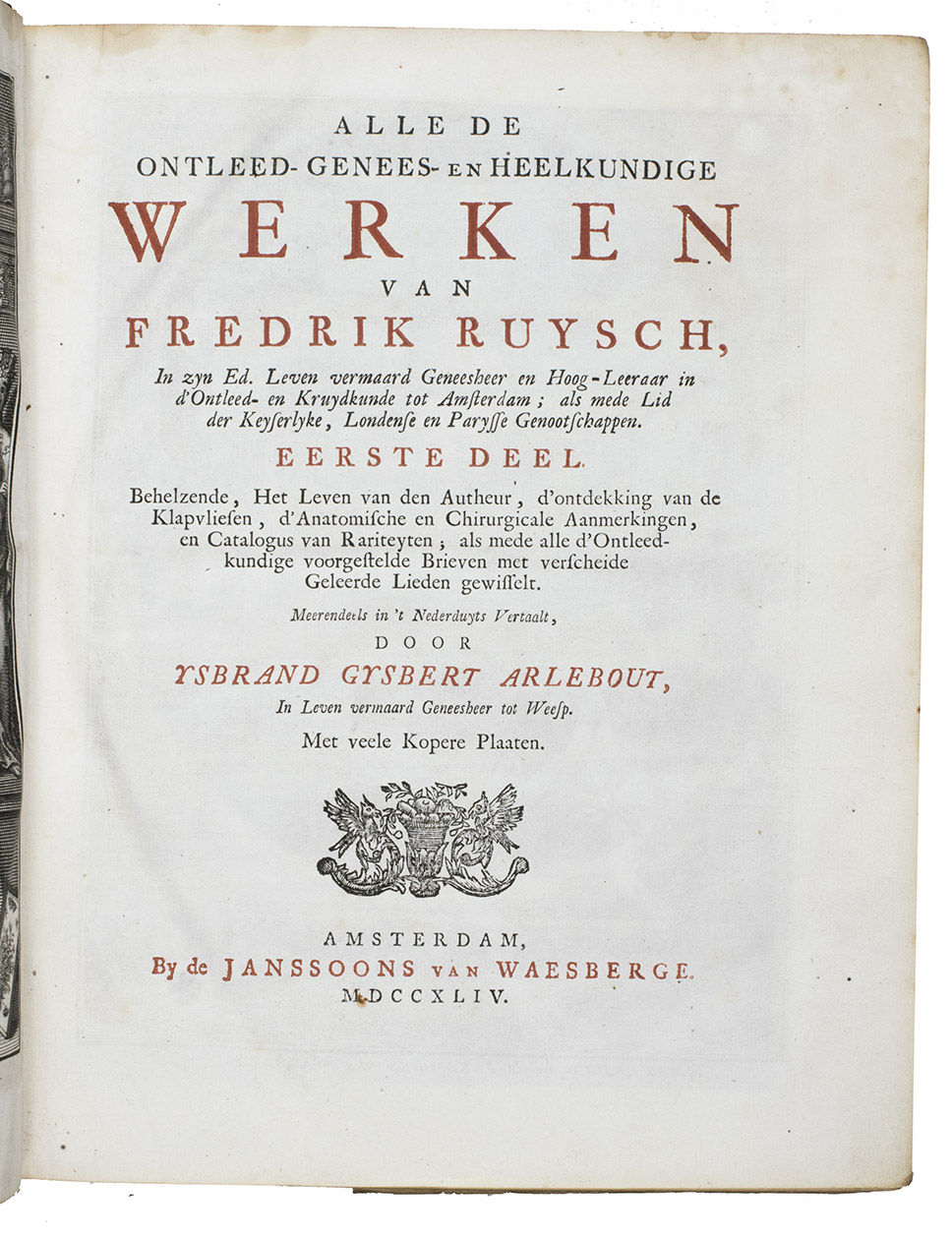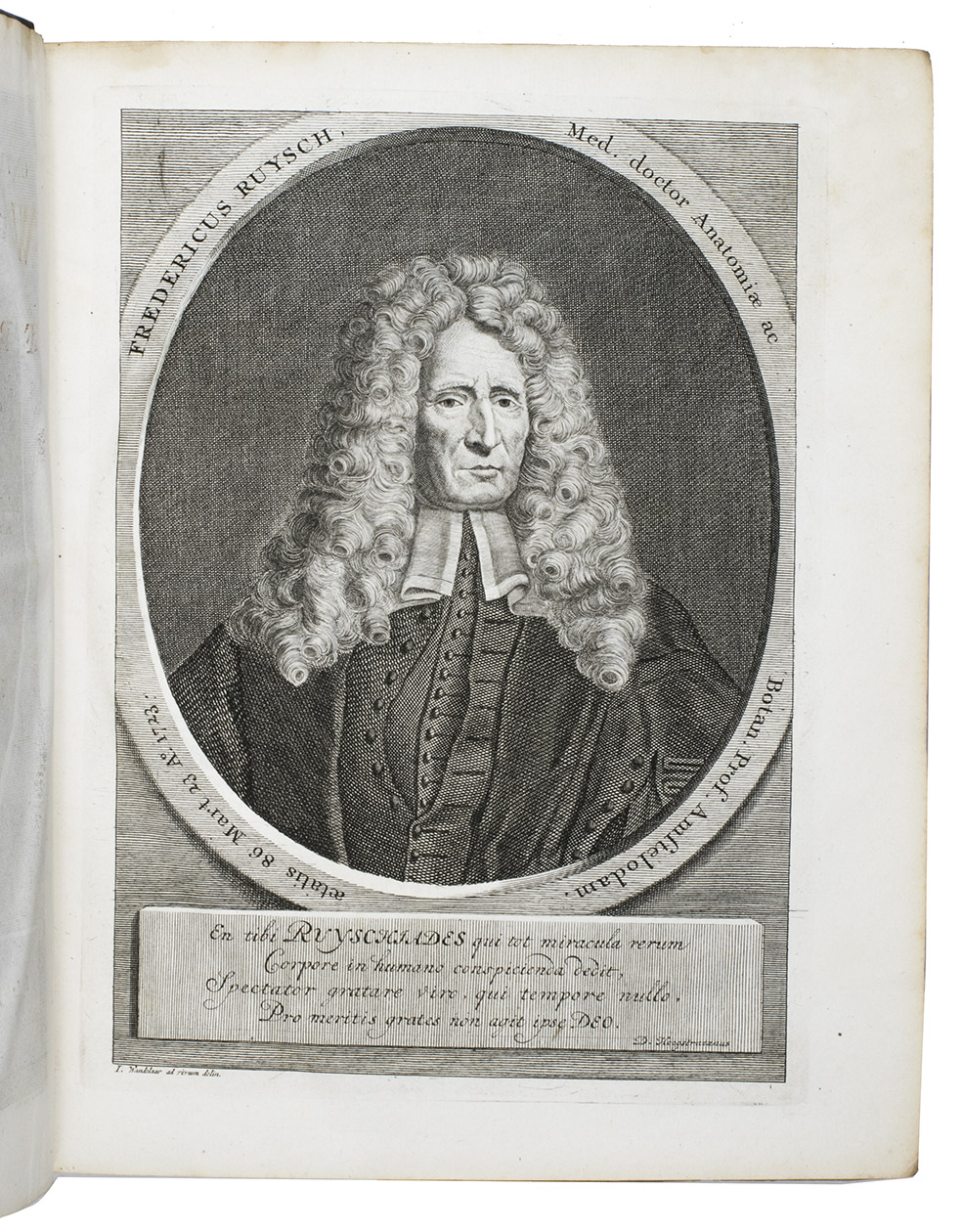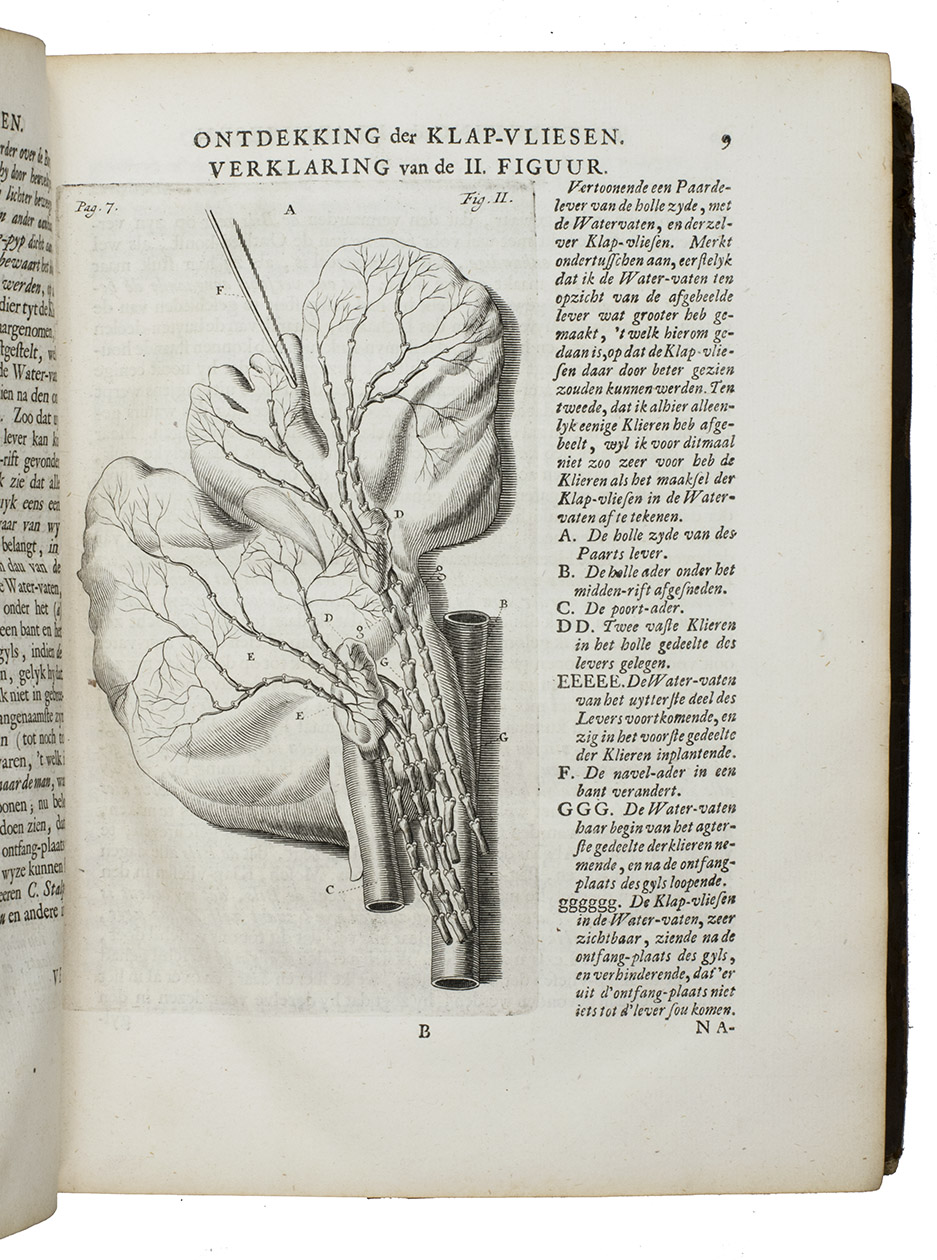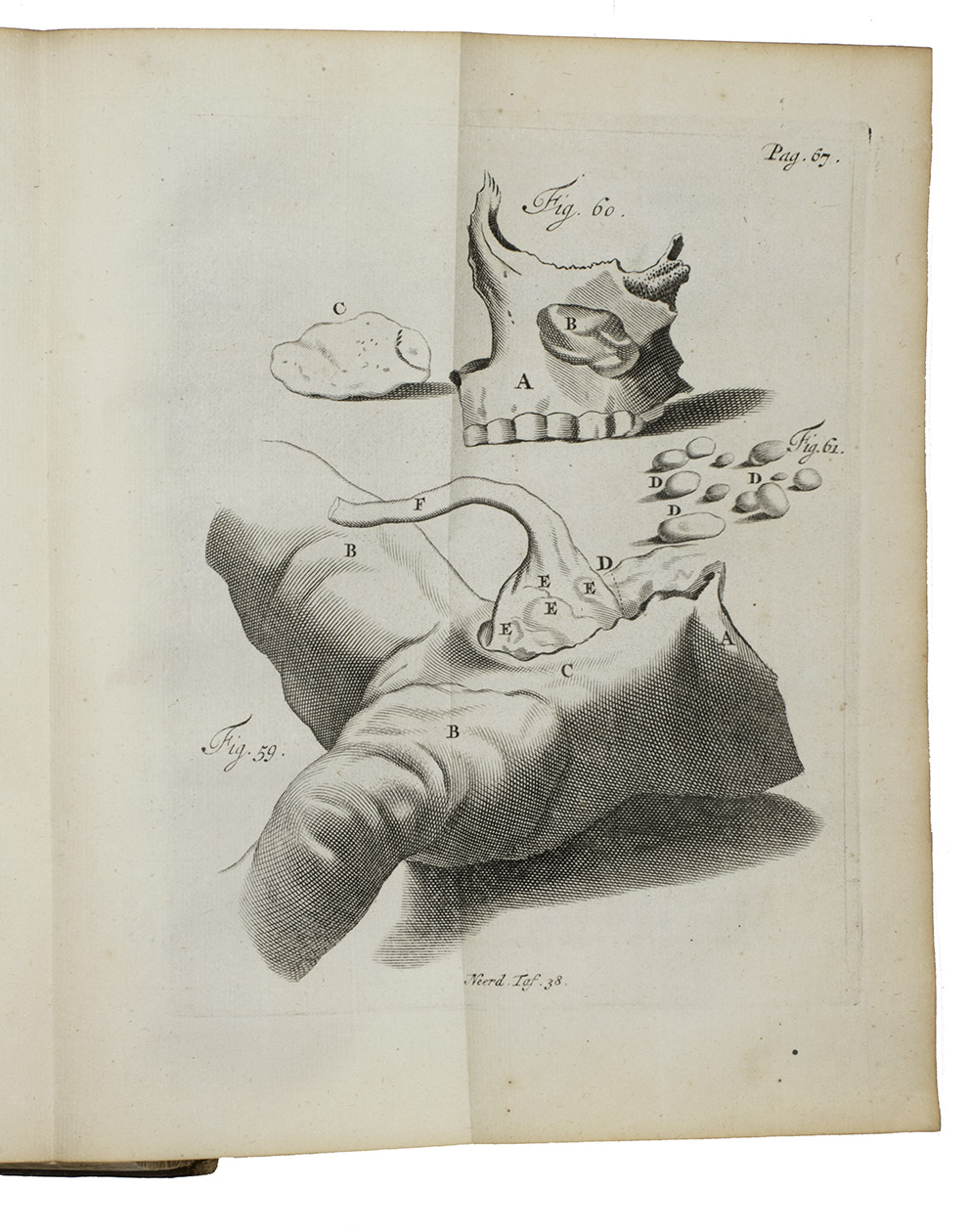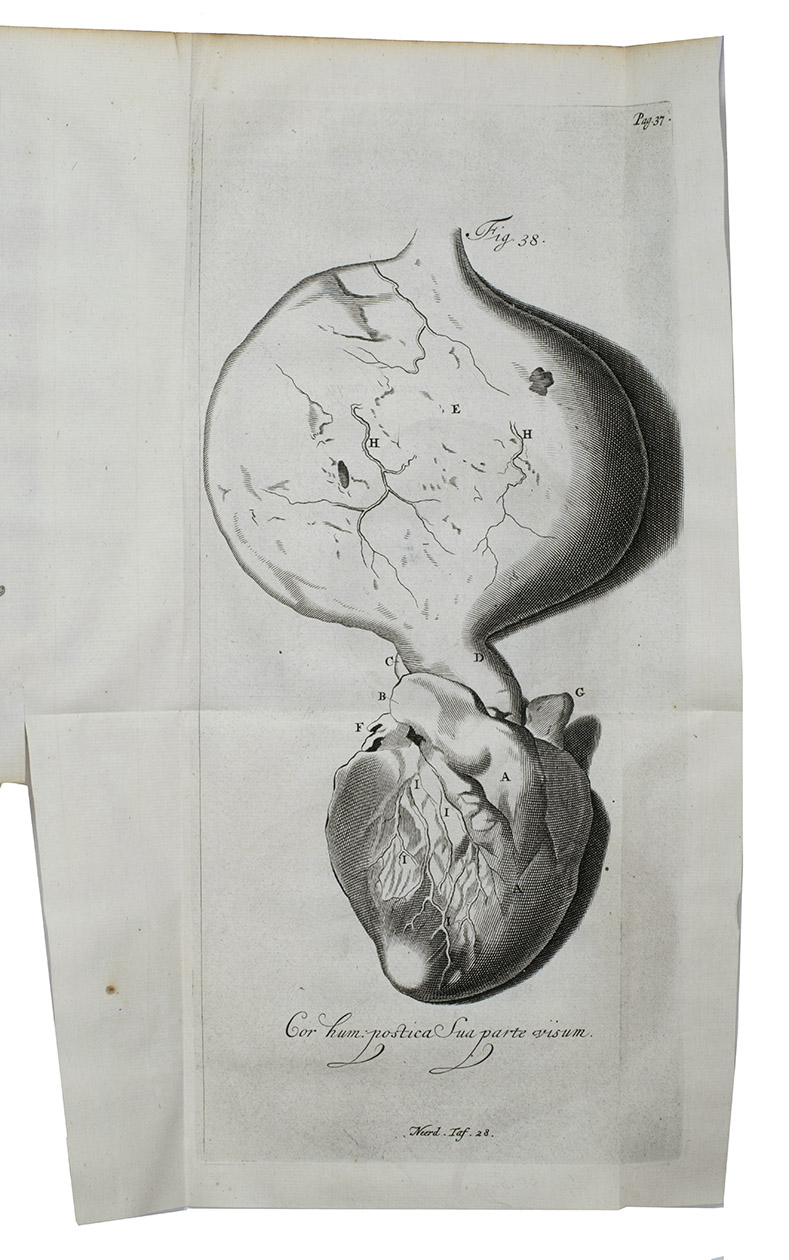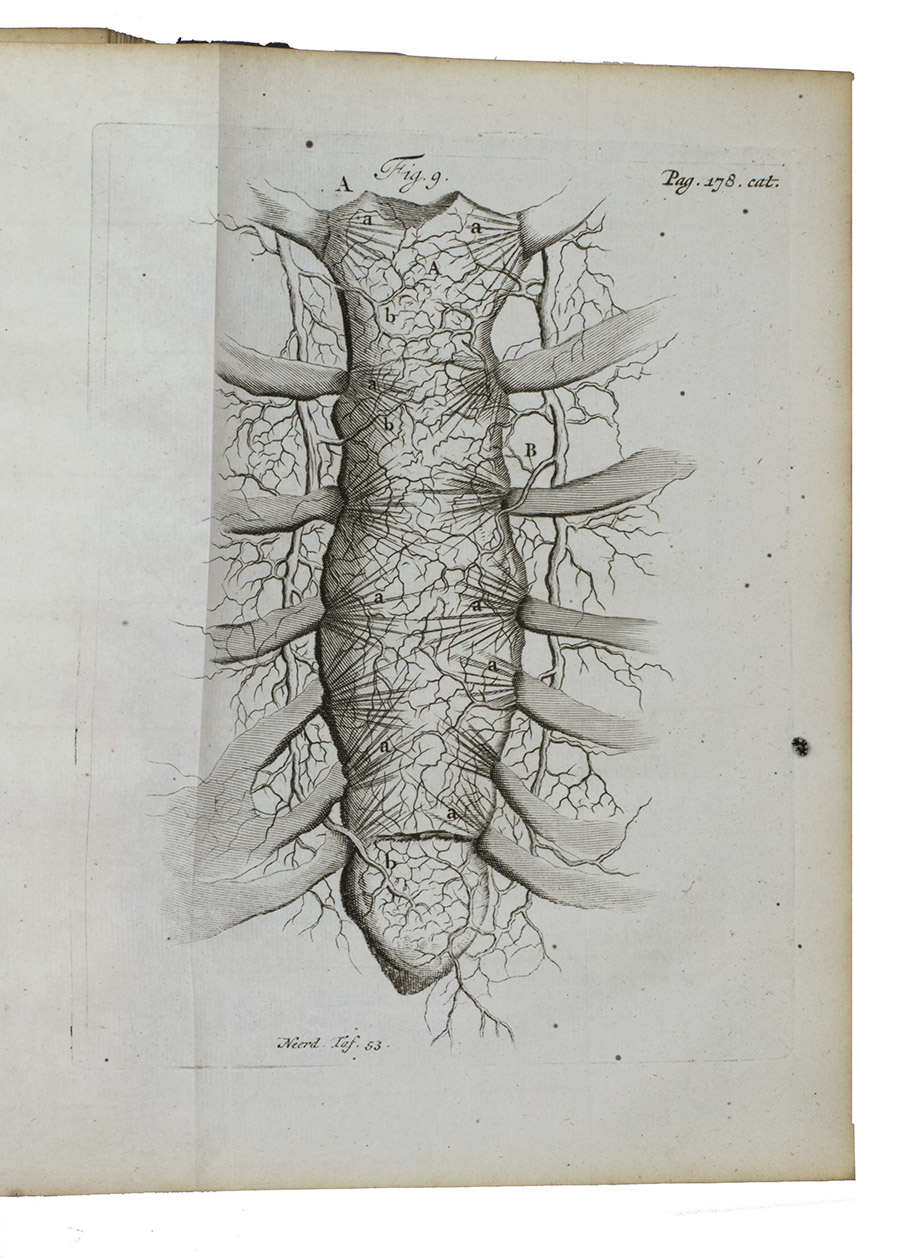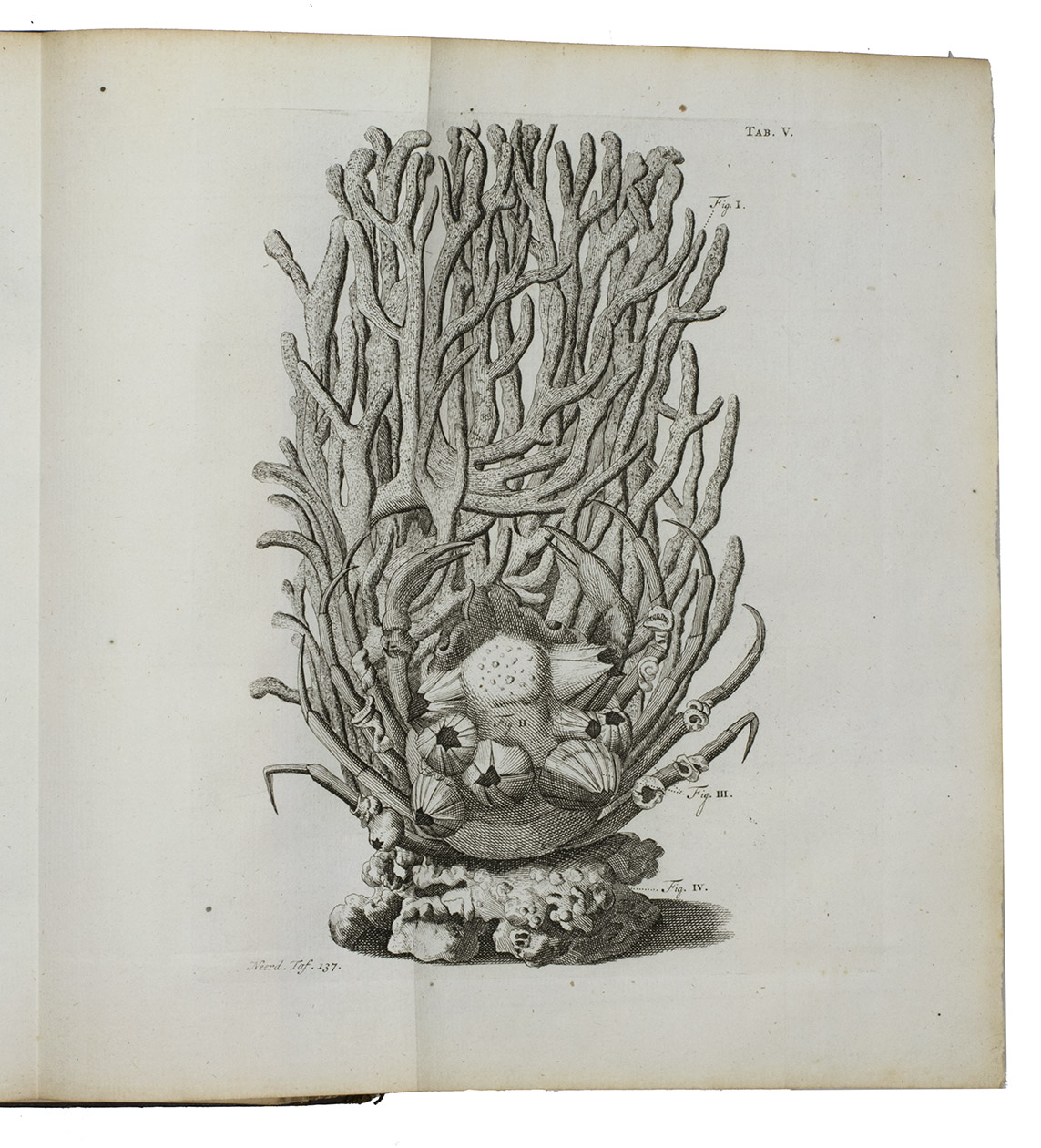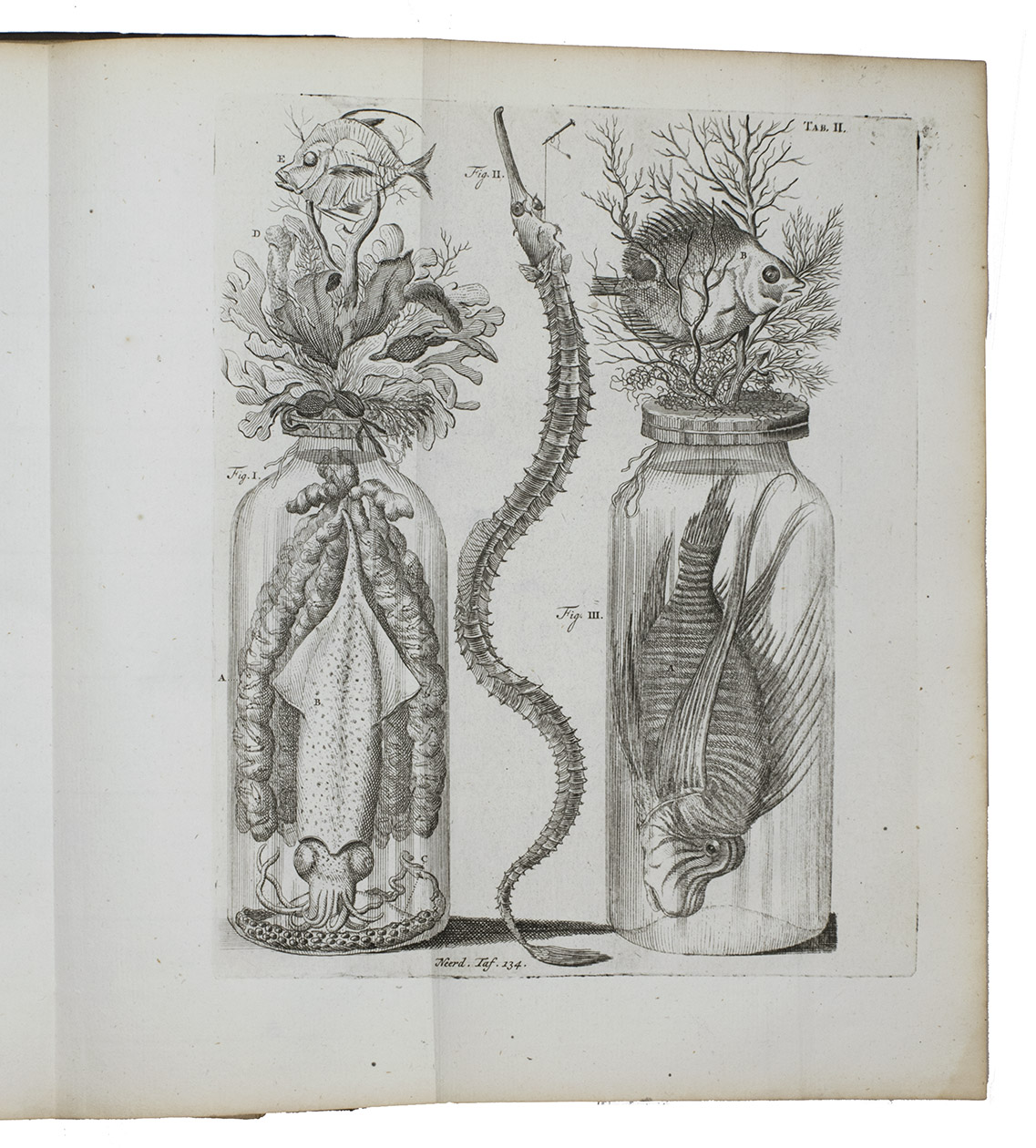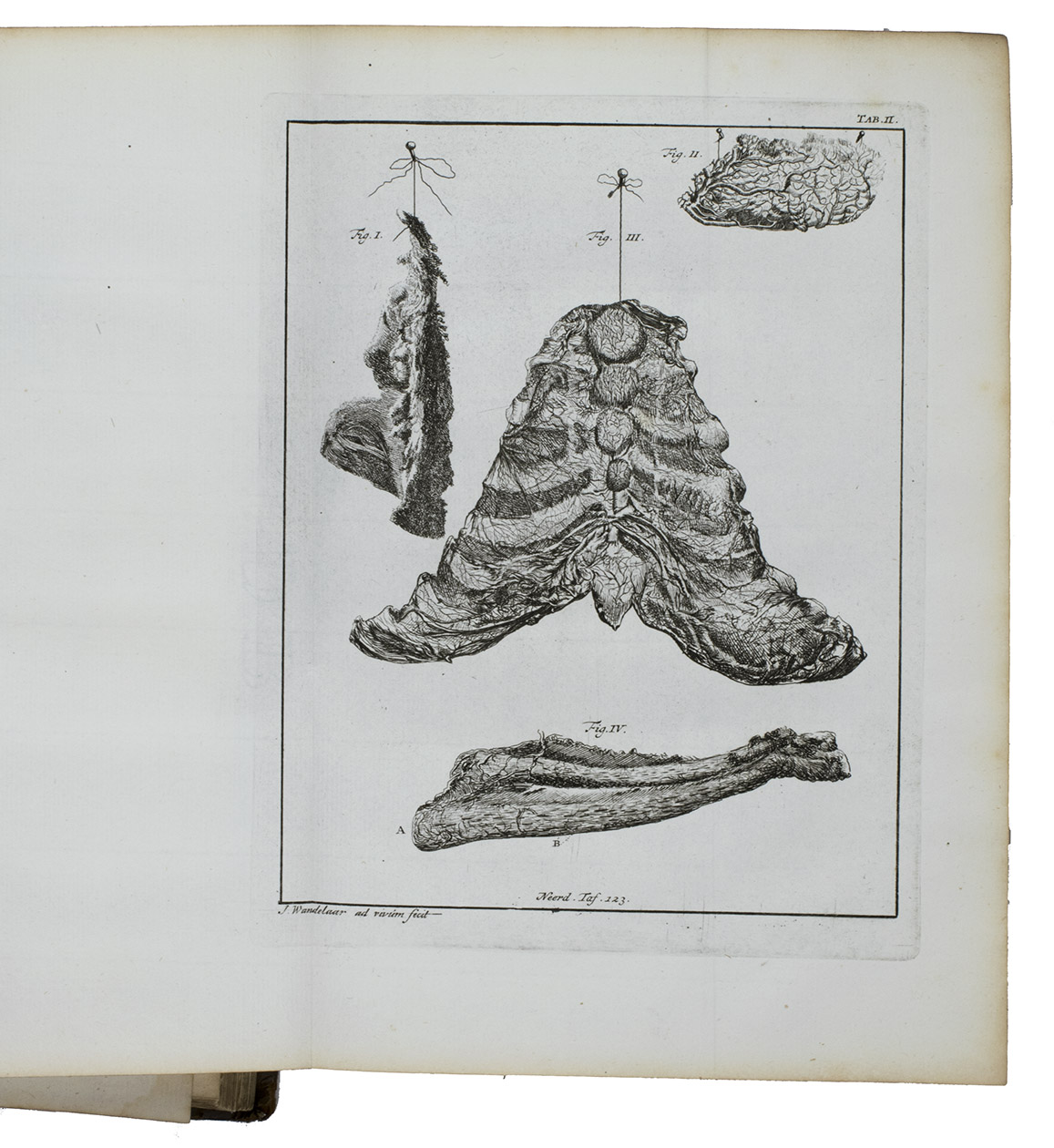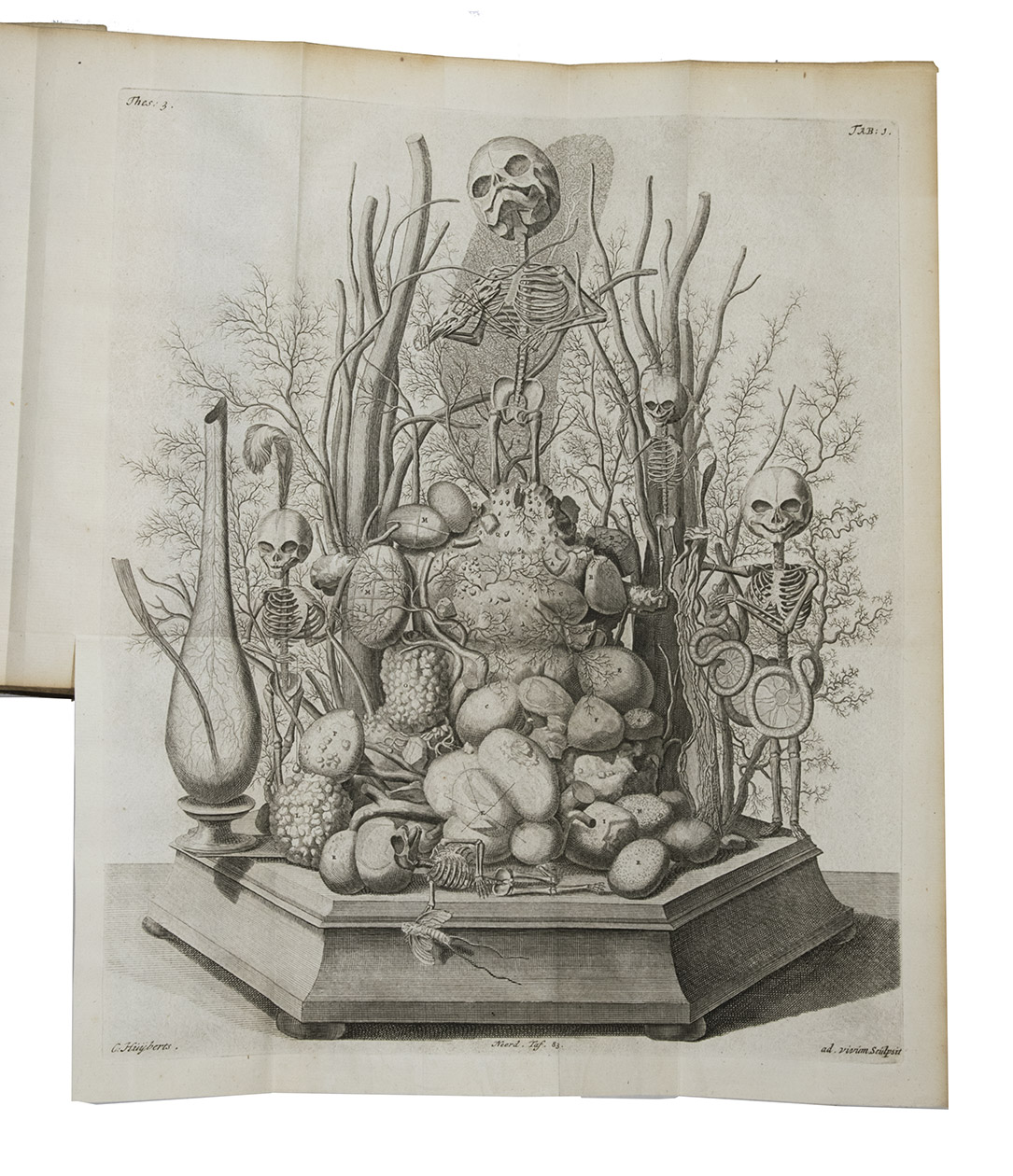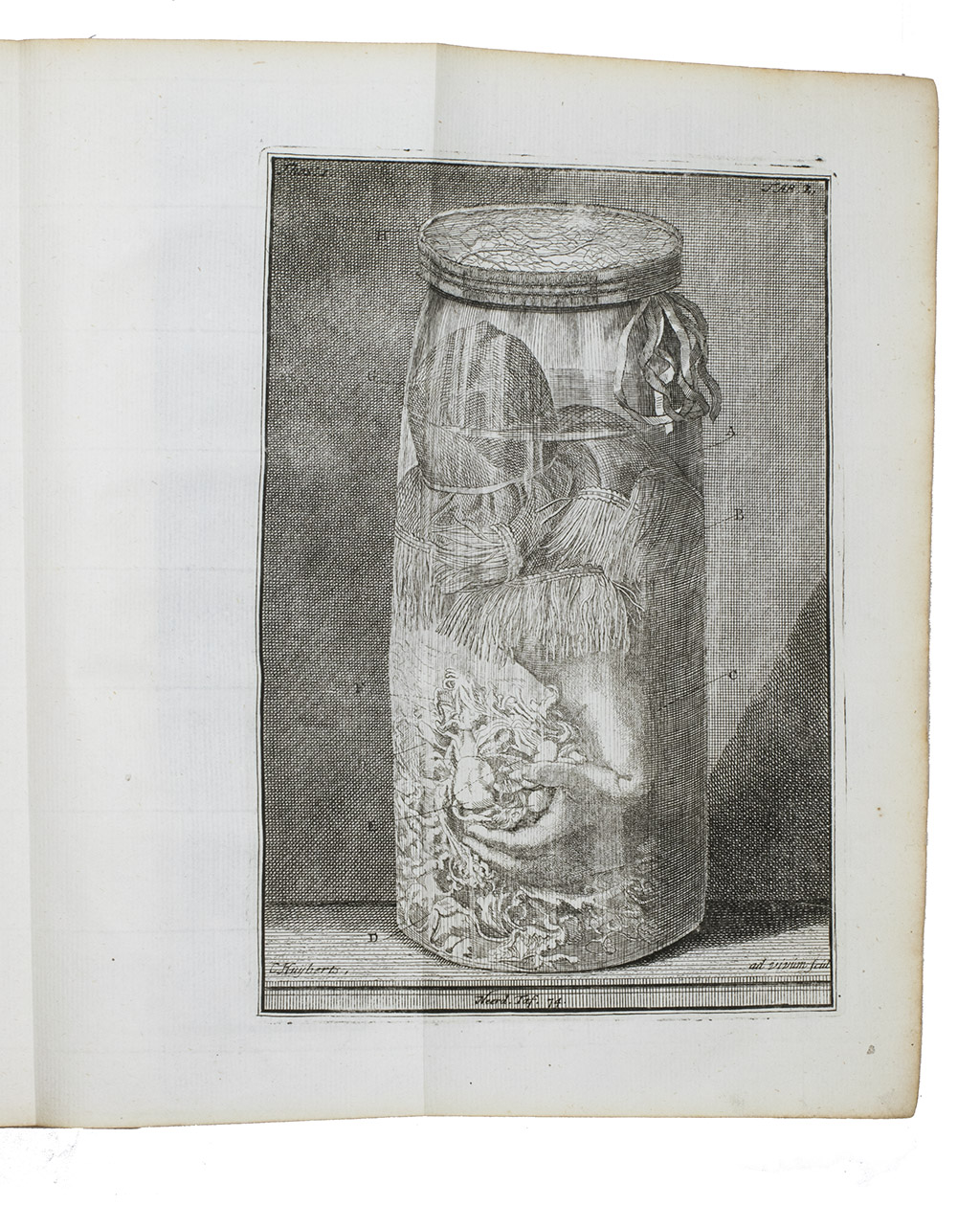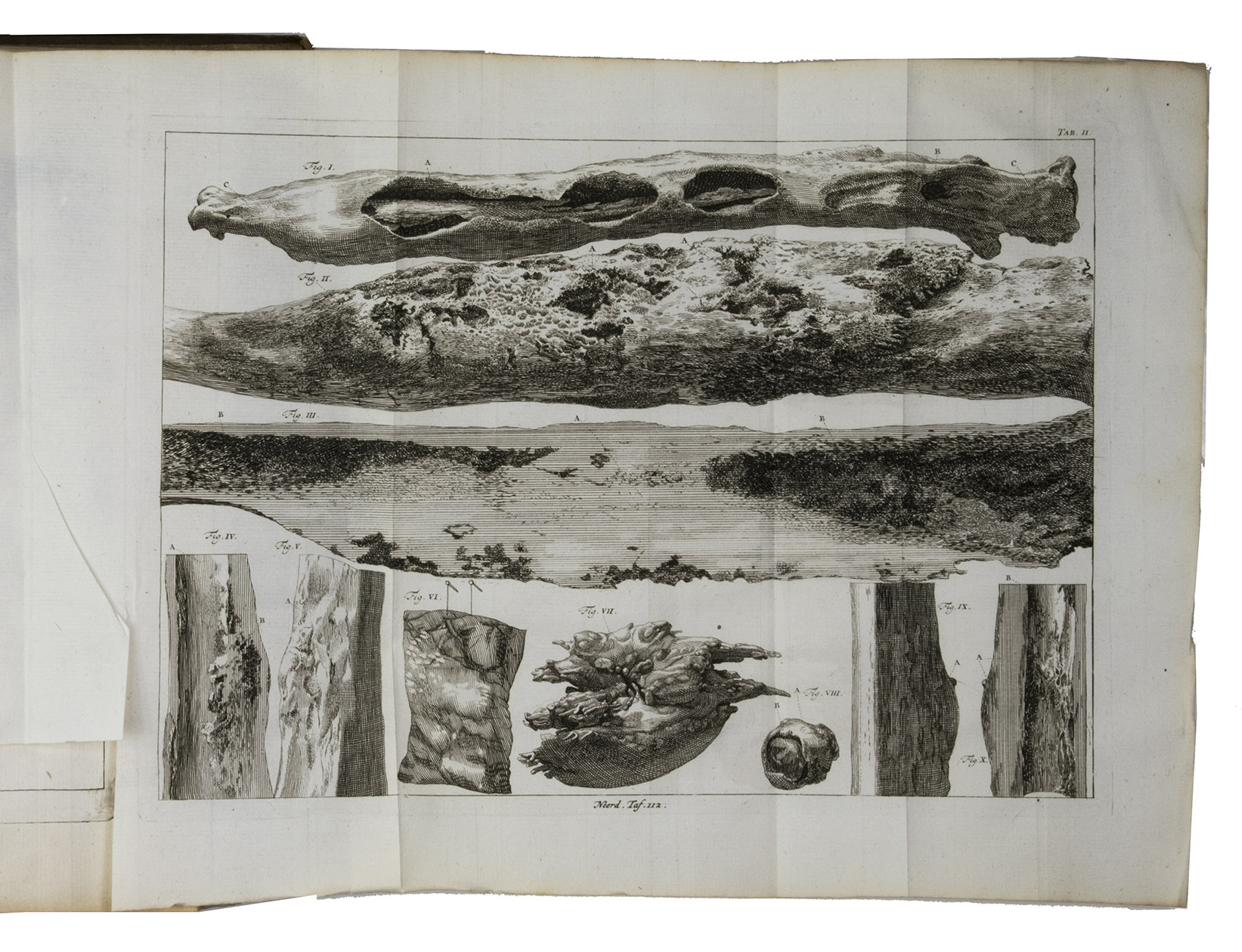RUYSCH, Frederik.
Alle de ontleed- genees- en heelkundige werken. Meerendeels in 't Nederduyts vertaalt door Ysbrand Gysbert Arlebout.
Amsterdam, Janssoons van Waesberge, 1744. 3 volumes. Large 4to. Engraved allegorical frontispiece, 3 titles in red & black, engraved portrait of Ruysch designed by I. Wandelaar and executed by D. Hoogstraten, 7 engraved illustrations in text, 2 woodcut illustrations in text and 133 engraved folding plates with anatomical designs and anatomical specimen. Contemporary marbled calf, spines ribbed and gilt with red-morocco title-labels. [4], 1280, [184] pp.
€ 17,500
Very rare Dutch edition of the complete works of the great Dutch anatomist, Frederik Ruysch. These complete works originally were published in Latin as Opera Omnia Anatomico-Medico-chirurgica ut usque edita in 1737.
Frederik Ruysch (1638-1731), a surgeon and anatomist, professor at Leiden and Amsterdam. He was the first to demonstrate the occurrence of blood vessels in almost all tissues of the human body, made many important anatomical investigations including those of the valves in the lympathics, the bronchial arteries, and the vascular plexuses of the heart, and he was the first also to point out the nourishment of the foetus through the umbilical cord. His works are richly illustrated with excellent engravings, no doubt enhanced by his injection techniques. And especially the engravings of anatomical specimen, which Ruysch prepared with great skill, both of individual organs and entire corpses, deserve special attention for their fantastic, almost surrealistic beauty, showing stuffed monsters, strange reptiles, dried plants, sea creatures, and smiling skeletons arranged in a quaint landscape of organs.
Ruysch invented a method of minute injection of anatomical structures allowing detailed studies. Ruysch himself never disclosed the composition of the fluids he used, but in 1743 Johann Christoph Rieger revealed that he used a mixture of talc, white wax, and cinnabar for injecting vessels, whereas his embalming fluid - liquor balsamicus - consisted of alcohol - prepared from wine or corn - to which some black pepper was added. However, Ruysch's own, real recipe for the injected substance has been lost, and his anatomical specimen still stay unsurpassed to this day.
Embalming by arterial injection as a mortuary practice is considered to have begun in England in the 18th century. The technique had actually been developed in the first half of the 17th century by the noted English physiologist William Harvey in experiments leading to his discovery of the circulation of blood, during which he injected coloured solutions into the arteries of cadavers. Such techniques were further perfected by Jan Swammerdam and Regnier de Graaf. Ruysch, however, who first studied the art of making preparations in the anatomical laboratory of Johannes van Horne, remains the unsurpassed master of anatomical preparations. In the summer of 1696 he announced the dissection of bodies "which appear still to be alive but which have been dead for about two years." Ruysch displayed these preparations - against an entrance fee - in several small rented houses in Amsterdam, and this "cabinet"of anatomical specimen became a major attraction for foreign visitors, and was sometimes referred to as "The Eighth Wonder of the World". One entry on page 30 in the visitor's protocol is Peter, Tsar of Russia. In 1717 Peter the Great bought the collection for 30.000 guilders. Several of the items are still held by the Museum of the Academy of Sciences in St. Petersburg. The seventy-nine year old Ruysch immediately began to set up a new collection.
Ruysch's fame inspired Giacomo Leopardi to his fantastic Dialogo di F. Ruysch e delle sue mummie in his Operette Morali.
A complete list of contents is available upon request.
Good copy. Hirsch, vol. V, p. 131; DSB 11 & 12, p. 41; Bibl.Med.Neerl. p. 63 (Latin edition "Opera Omnia", 1737, in 5 vols.); Parkinson pp. 297-298 (Latin edition: 13 works, incl. 11 letters); Balsiger, B.J. The Kunst- und Wunderkammern: a catalogue raisonné of collecting in Germany, France and England, 1565-1750 (Pittsburgh, 1970), p. 384 (for parts on cabinets); this Dutch edition not in Garrisson-Morton; not in Norman.
Related Subjects:
